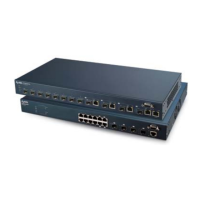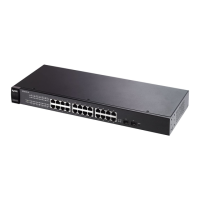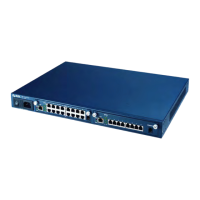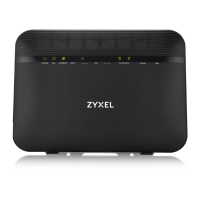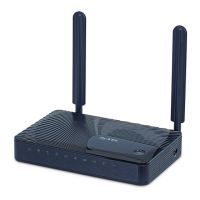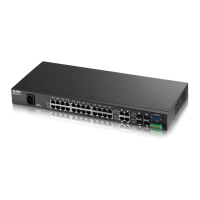GS-4012F User’s Guide
Chapter 32 Access Control 191
SNMP itself is a simple request/response protocol based on the manager/agent model. The
manager issues a request and the agent returns responses using the following protocol
operations:
32.3.1 Supported MIBs
MIBs let administrators collect statistics and monitor status and performance.
The GS-4012F supports the following MIBs:
• SNMP MIB II (RFC 1213)
• RFC 1157 SNMP v1
• RFC 1493 Bridge MIBs
• RFC 1643 Ethernet MIBs
• RFC 1155 SMI
• RFC 2674 SNMPv2, SNMPv2c
• RFC 1757 RMON
• SNMPv2, SNMPv2c or later version, compliant with RFC 2011 SNMPv2 MIB for IP,
RFC 2012 SNMPv2 MIB for TCP, RFC 2013 SNMPv2 MIB for UDP
32.3.2 SNMP Traps
The GS-4012F sends traps to an SNMP manager when an event occurs. SNMP traps supported
are outlined in the following table.
Table 73 SNMP Commands
COMMAND DESCRIPTION
Get Allows the manager to retrieve an object variable from the agent.
GetNext Allows the manager to retrieve the next object variable from a table or list within an
agent. In SNMPv1, when a manager wants to retrieve all elements of a table from an
agent, it initiates a Get operation, followed by a series of GetNext operations.
Set Allows the manager to set values for object variables within an agent.
Trap Used by the agent to inform the manager of some events.
Table 74 SNMP Traps
GENERIC TRAP SPECIFIC TRAP DESCRIPTION
0 (Cold Start) 0 This trap is sent when the switch is turned on.
1 (WarmStart) 0 This trap is sent when the switch restarts.
2 (linkDown) 0 This trap is sent when the Ethernet link is down.
3 (linkUp) 0 This trap is sent when the Ethernet link is up.
4 (authenticationFailure) 0 This trap is sent when an SNMP request comes from
non-authenticated hosts.

